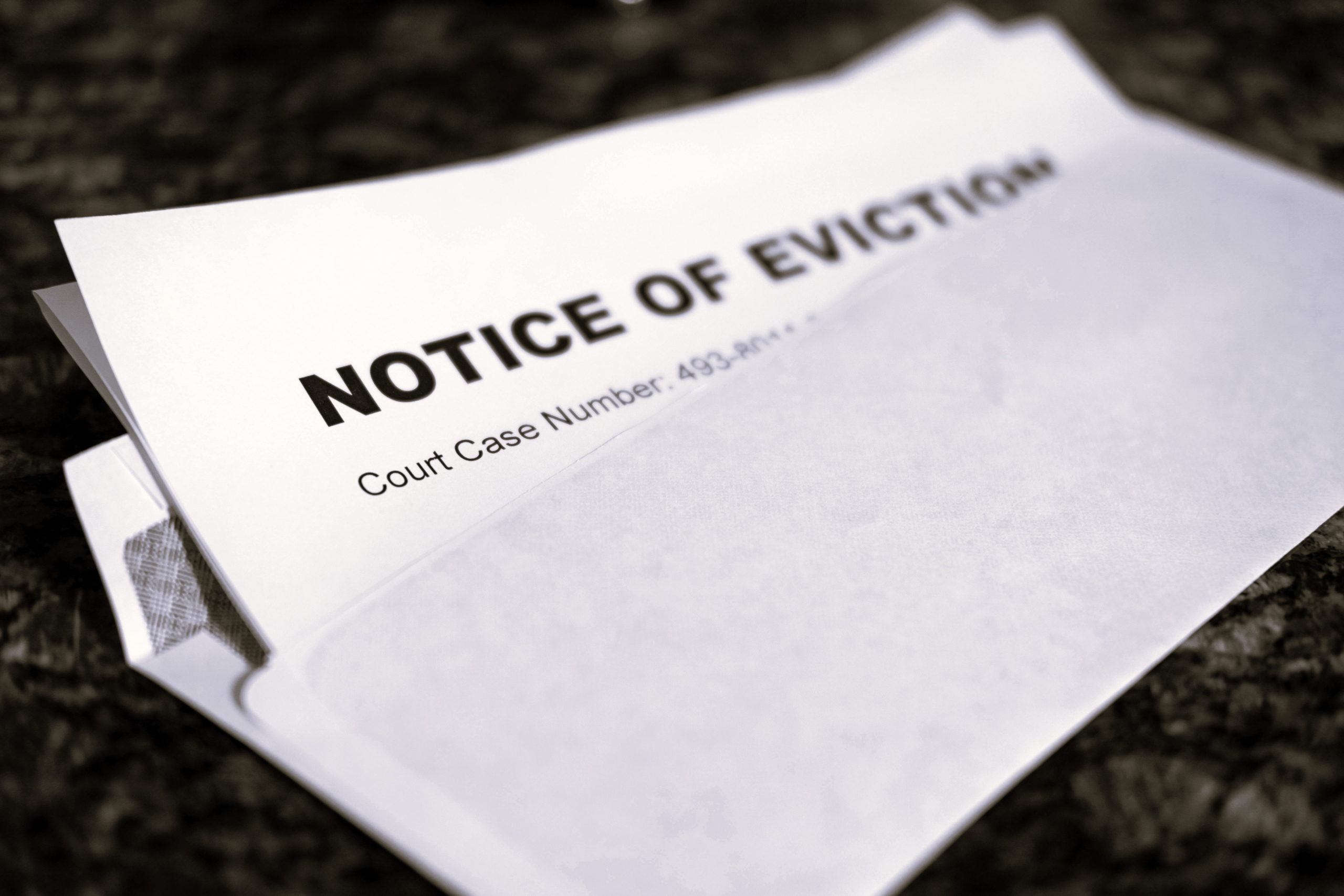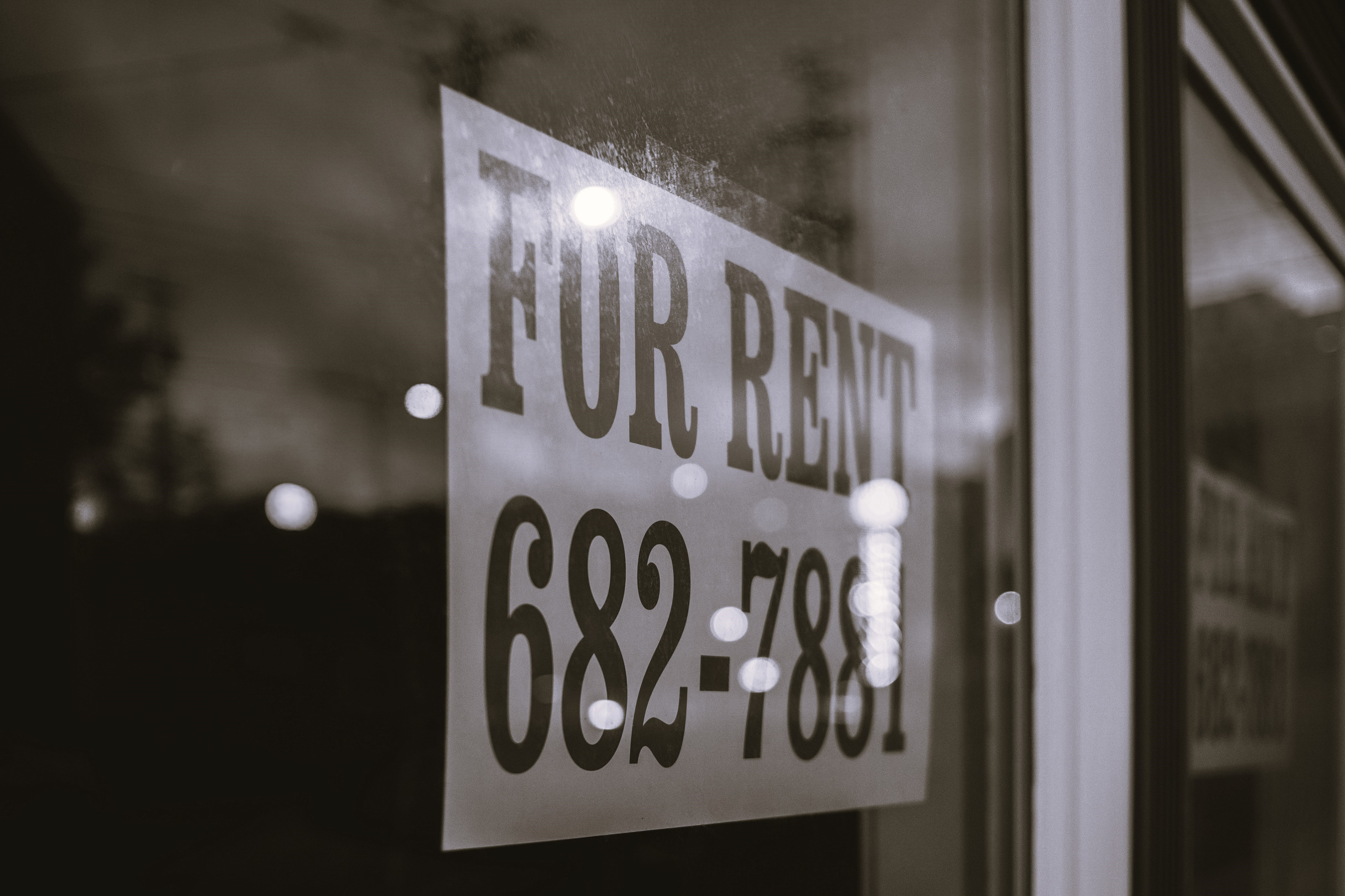Criminalising Homelessness: the Case of Area Bans in the Netherlands
Els Schipaanboord & Michel Vols
Introduction
Homelessness remains a significant societal issue throughout Europe. The Eighth Overview of Housing Exclusion in Europe, published in 2023 by FEANTSA and the Abbé Pierre Foundation, revealed that approximately 895,000 individuals are homeless in Europe.[1] This staggering number demonstrates that even one of the wealthiest continents worldwide struggles to effectively implement some fundamental aspects of the right to adequate housing, as outlined in Article 11 of the ICESCR and Article 31 of the Revised European Social Charter.[2]
Approximately 895,000 individuals are homeless in Europe
Recent research has been conducted on homelessness and the right to adequate housing. One area of focus has been the analysis of Housing First programs, assessed through the lens of the right to adequate housing.[3] Another area of research has evaluated how eviction protections are implemented in national jurisdictions to prevent homelessness.[4]
This blog aims to contribute to research on the criminalisation of homelessness and the right to adequate housing. The concept of criminalisation of homelessness refers to ‘formal and informal measures and enforcement policies to limit where individuals who experience homelessness can congregate, and punish those who engage in life-sustaining or natural human activities in public spaces’.[5] An example of criminalising homelessness is making it illegal to sleep, sit or store personal belongings in public spaces.[6] Regulations prohibiting begging or removing items from rubbish bins can also be characterised as criminalising homelessness.[7]
An example of criminalising homelessness is making it illegal to sleep
In this blog, we examine area bans (or exclusion orders) as an instrument that may criminalise homelessness. Area bans are orders issued by (local) authorities to individuals to bar them from entering or staying in certain geographical areas. These areas may be more or less specifically designated streets, squares, public buildings, or other infrastructure such as train stations, neighbourhoods, or even larger parts of a city. In some countries, area bans may be issued by a court in criminal proceedings, but in other countries, area bans are issued by administrative authorities such as the mayor. Non-compliance with area bans typically results in criminal offences and hefty fines or imprisonment for violators. Area bans are used in various countries worldwide and have been studied widely.[8] In this blog, however, we evaluate the usage of area bans in the Netherlands, specifically targeting homeless individuals.
Areas bans in the Netherlands
The mayors in the Netherlands have the authority to impose area bans under different pieces of legislation. The Municipality Act of 1992 gives mayors the power to issue an area ban in case of a serious disturbance of public order.[9] Additionally, local ordinances give mayors similar authority. The municipality of Rotterdam, for example, has a bylaw that allows the mayor to issue an area ban to individuals who disturb public order or commit criminal offences. This is done to ensure public safety, prevent or limit nuisance, protect the living environment, ensure the safety of people and property, and uphold health and morality standards.[10]
It is clear that the area bans target homeless people
Research shows area bans are used to fight various types of disorder, including football hooliganism and religious extremism.[11] Yet, it is clear that the area bans target homeless people as well.[12] This becomes evident, too, if we analyse some recent case law on area bans.
Dutch case law on area bans
Five recent Dutch court rulings have highlighted the significant impact of an imposed area ban.[13] In each of these cases, the individuals who were sanctioned were homeless. They claimed to rely on the designated area for which the area ban was imposed. They also suffered from substance abuse. In three of these cases, the case dealt with the legality of the area ban itself. In these cases, the judge ruled in favour of the mayor, stipulating that the judge hoped that the area ban would lead to accepting help.[14] Criminal courts delivered the other two judgments. In the Netherlands, violating a mayor-imposed area ban is considered a felony and can lead to criminal prosecution. In the two criminal cases the homeless individuals were sentenced to two years for treatment of their addiction.[15] These two final cases demonstrate the potential consequences of area bans and the severity of the associated criminal sanctions for violating them.
Area bans and European human rights
It is noteworthy that the right to adequate housing is not mentioned in cases on area bans and homelessness available in the Dutch online case law database. This might be surprising because it is a common belief that homelessness should be recognised as an extreme violation of this right.[16] Yet, in reality, the right often only offers assistance (if any) to those already housed. Housing outsiders, such as people experiencing homelessness, do not have such a stable (legal) foundation from which to start.[17]
This, however, does not mean that human rights do not play a role in the context of area bans at all. Of course, area bans limit some’s right to liberty of movement as laid down in, inter alia, Article 2 of the Fourth Protocol to the ECHR. When it comes to homeless individuals, one could argue that imposing an area ban restricts their right to freedom to choose their residence, as stated in the same article. After all, the streets, porches, benches, and bridges – the very places from which they are banned – could be considered their potential places of residence. Even though the Netherlands has ratified the Fourth Protocol to the ECHR and accepted the rights of liberty of movement and freedom to choose one’s residence, the published case law does not indicate that Dutch courts frequently recognise and uphold these rights in cases on areas bans imposed on homeless individuals. Two relatively old cases, not dealing with a homeless person, ended up with the European Court of European Rights (ECtHR). In Landvreugd v. The Netherlands and Oliveira v. the Netherlands, the ECtHR ruled that the mayor of Amsterdam had legitimately limited the right to liberty of movement because all the criteria in the limitation clauses had been met.[18]
Of course, it should not be assumed that all claims based on Article 2 of the Fourth Protocol, in the context of area bans imposed on homeless individuals, lack merit. One may argue that in specific contexts, issuing an area ban is not justified in the public interest in a democratic society (paragraph 4 of Article 2) or necessary in a democratic society (paragraph 3 of Article 2). This argument primarily concerns the proportionality of the area ban. The argument’s success greatly depends on the context of the case in which it is presented. Having decent legal representation and procedural safeguards will surely increase the likelihood of successfully challenging an area ban.
One may think Article 6 of the ECHR provides procedural protection to homeless individuals facing an area ban. Yet, under Dutch law, issuing an area ban is not characterised as charging someone with a criminal offence. In the legal realm, area bans are seen as an administrative sanction, purely reparatory and not punitive in nature. Research indicates, however, that in real life, area bans and other reparatory administrative sanctions are experienced as punitive by both the sanctioned persons and governmental officers involved in imposing the sanctions.[19] Nevertheless, the hegemonic nature of the legal qualification of area bans implies that important safeguards, such as the right to have adequate time and facilities to prepare a defence, enshrined in Article 6 of the ECHR are lacking.[20] This also holds for, for example, the right to have the free assistance of an interpreter if one cannot understand or speak the language used in court.
Conclusion
The lack of a right to have the free assistance of an interpreter is especially relevant in the context of area bans imposed on homeless individuals. Statistical data collected by Statistics Netherlands (CBS) shows that in 2022, almost 40 per cent of homeless individuals in the Netherlands were born in another European country (5%) or outside Europe (35%). Another 21 per cent of homeless individuals in the Netherlands were born in the Netherlands but have parents born outside Europe. This suggests that a significant proportion of homeless people in the Netherlands may not speak Dutch or at least struggle to understand it.[21] This finding challenges the notion that homeless people are adequately protected against area bans, exposing disparities between government expectations and citizens’ capabilities.[22]
A human-rights-based approach would suggest providing care and housing support
Besides that, one may argue that imposing an area ban on a homeless individual is a setup for failure anyway. Of course, we must consider that temporarily removing individuals who cause public disorder may relieve affected communities. Imposing an area ban on a highly dependent individual unlikely to comply is ineffective. It should result in serious doubts on the proportionality of the area ban in court. Research on area bans showed that professionals involved in imposing these bans recognised this setup for failure in the context of homeless individuals.[23] In cases where homelessness leads to disturbances and disorder, a human-rights-based approach would suggest providing care and housing support instead of further marginalising homeless individuals. They are already victims of human rights violations, and criminalisation would only add to their suffering.
References
[1] Report: 8th Overview of Housing Exclusion in Europe 2023 , https://www.feantsa.org/en/report/2023/09/05/report-8th-overview-of-housing-exclusion-in-europe-2023, pp. 15-24.
[2] E. Sweeney, L.M. Bruijn, & M. Vols, ‘Deconstructing the Eviction Protections Under the Revised European Social Charter: A Systematic Content Analysis of the Interplay Between the Right to Housing and the Right to Property’, Human Rights Law Review, Vol. 23, No. 4, 2023.
[3] S.L. Stadler, and D. Collins, ‘Assessing Housing First Programs from a Right to Housing Perspective’, Housing Studies, Vol. 38, No. 9, 2023, pp. 1719-1739.
[4] L.M. Bruijn, The Alternative War on Drugs: Drug Evictions, Cannabis Regulation and the Legal Consequences of Adapting to the Limitations of Criminal Law in the Field of Drug Control, Groningen, University of Groningen, 2021; M. Vols, ‘The Optional Protocol to the ICESCR, Homelessness and Moral Hazard: The Alternative Adequate Housing Requirement in the CESCR’s Jurisprudence – an Incentive Not to Pay for Housing?’, International Human Rights Law Review, Vol. 12, No. 1, 2023, pp. 1-25.
[5] S. Jones (Ed.), Mean streets. A report on the criminalisation of homelessness in Europe, Brussels, Feantsa, 2013, p. 15.
[6] See M. Killander, ‘Criminalising Homelessness and Survival Strategies through Municipal By-Laws: Colonial Legacy and Constitutionality’, South African Journal on Human Rights, Vol. 35, No. 1, 2019, pp. 70–93; L. Faragó, D. Ferenczy-Nyúl, A. Kende, P. Krekó, & Z. Gurály, ‘Criminalization as a Justification for Violence against the Homeless in Hungary’, The Journal of Social Psychology, Vol. 162, No. 2, 2022, pp. 216-230.
[7] See D.J. Baker, ‘A Critical Evaluation of the Historical and Contemporary Justifications for Criminalising Begging Comment’, Journal of Criminal Law, Vol. 73, No.3, 2009, pp. 212–240; S.Y. Rahman, ‘The Beggar as a Political Symbol: An Interactionist Reading of the Endurance of Anti-Begging Laws in India’, Social Change, Vol. 51, No. 2, 2021, pp. 206-225; N. Lgarah, and L. MacLean, ‘Bedelverboden: van ordeprobleem tot mensenrechtenkwestie’, Ars Aequi, Vol. 6, 2021.
[8] See for example: B. Belina, ‘From Disciplining To Dislocation: Area Bans in Recent Urban Policing in Germany’, European Urban and Regional Studies, Vol. 14, No. 4, 2007, pp. 321–236; K. Beckett, & S. Herbert, Banished: The New Social Control In Urban America, Oxford, Oxford University Press, 2012.
[9] Articles 172(3) and Article 172a Gemeentewet 1992.
[10] Article 2:77b APV Rotterdam 2023, http://lokaleregelgeving.overheid.nl/CVDR373493/18.
[11] M. van Rooij, J. Bijlsma, A.E. Schilder, & L. Smeehuijzen, ‘Bestrijding van voetbalgeweld’, Ars Aequi, Vol. 11, 2016, pp. 809-819; J.G. Brouwer, & A.E. Schilder, ‘Het gebiedsverbod als wapen tegen verspreiding van jihadistisch gedachtegoed’, Justitiële verkenningen, Vol. 44, No. 2, 2018, pp. 58–69.
[12] A. Sibma, N. Struiksma, E. Beswerda, & N. Woestenburg, Op Doel?, Den Haag, WODC, 2012, p. 65; M.I. Tuk, and L.M. Van den Bor, ‘De toepassing van gebiedsverboden op grond van de gewijzigde Wet MBVEO in de praktijk’, De Gemeentestem, Vol. 7493, 2019, p. 578; Winter, C. Boxum, T. Floor, E. Krol, & N. Struiksma, Evaluatie Wet maatregelen bestrijding voetbalvandalisme en ernstige overlast, WODC, 2021.
[13] District Court The Hague 20-07-2022, ECLI:NL:RBDHA:2022:9198; District Court The Hague 20-07-2022, ECLI:NL:RBDHA:2022:9201; District Court The Hague 20-07-2022, ECLI:NL:RBDHA:2022:9200; District Court Amsterdam 26-04-2023, ECLI:NL:RBAMS:2023:3532; District Court The Hague 9-11-2023, ECLI:NL:RBDHA:2023:17139.
[14] District Court The Hague 20-07-2022, ECLI:NL:RBDHA:2022:9198; District Court The Hague 20-07-2022, ECLI:NL:RBDHA:2022:9201; District Court The Hague 20-07-2022, ECLI:NL:RBDHA:2022:9200.
[15] District Court Amsterdam 26-04-2023, ECLI:NL:RBAMS:2023:3532; District Court The Hague 9-11-2023, ECLI:NL:RBDHA:2023:17139.
[16] Report of the Special Rapporteur on adequate housing as a component of the right to an adequate standard of living, and on the right to non-discrimination in this context, United Nations A/HRC/31/54, 30 December 2015, https://digitallibrary.un.org/record/831237, p. 3.
[17] See M. Pieterse, ‘Towards a Right to the City?: The Slow Convergence of Rights to Housing and Land in South African Constitutional Jurisprudence’, International Human Rights Law Review, Vol. 11, No. 1, 2022, p. 54.
[18] Landvreugd v. The Netherlands, ECHR(2002), Application no. 37331/97; Olivieira v. The Netherlands, ECHR (2002), Application no. 33129/96.
[19] See R. Salet, and H. Sackers, ‘Spanningen tussen de bestuurlijke en strafrechtelijke aanpak van criminaliteit’, Nederlands Juristenblad, Vol. 14, 2019, p. 937. See also Beckett & Herbert, 2012, p. 104.
[20] See M. Vols, and D. Duran, ‘Tackling Anti-Social Behaviour and Homelessness with Exclusion Orders in the Netherlands, Belgium, England and Wales’, in G.J. Vonk and A. Tollenaar (Eds.), Homelessness and the Law, Oisterwijk, Wolf Legal Publishers, 2014.
[21] See https://www.cbs.nl/nl-nl/nieuws/2023/39/26-6-duizend-dakloze-mensen-begin-2022. See also M. Rooij, ‘Verbanning uit het semipublieke domein’, Justitiële verkenningen, Vol. 44, No.2, 2018, p. 20.
[22] See Rapport van de Wetenschappelijke raad voor het regeringsbeleid, ‘Weten is nog geen doen. Een realistisch perspectief op redzaamheid’, 2017, https://www.wrr.nl/publicaties/rapporten/2017/04/24/weten-is-nog-geen-doen.
[23] H. Winter, C. Boxum, E. Krol, & N. Struiksma, Evaluatie Wet maatregelen bestrijding voetbalvandalisme en ernstige overlast, WODC, 2021, pp. 52-54 & 75.







